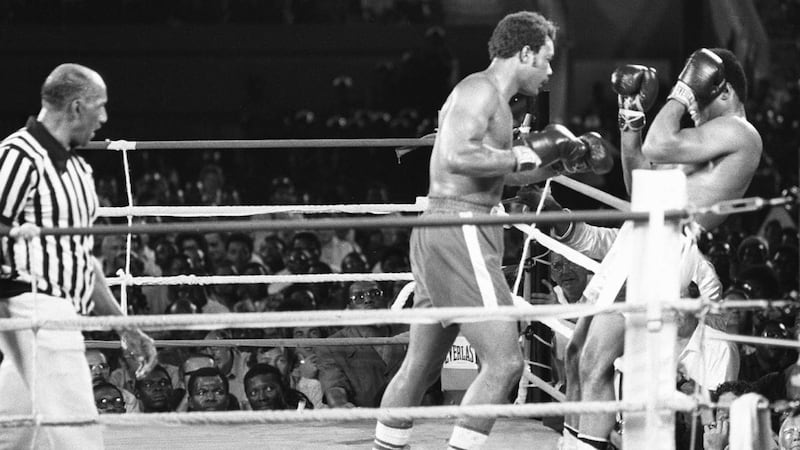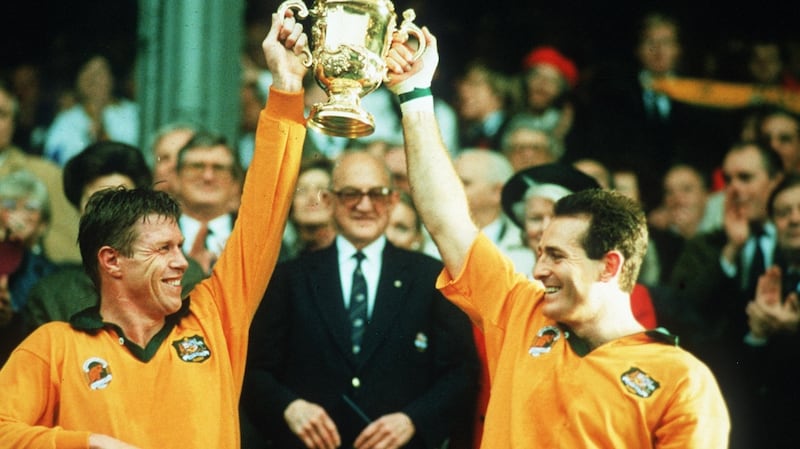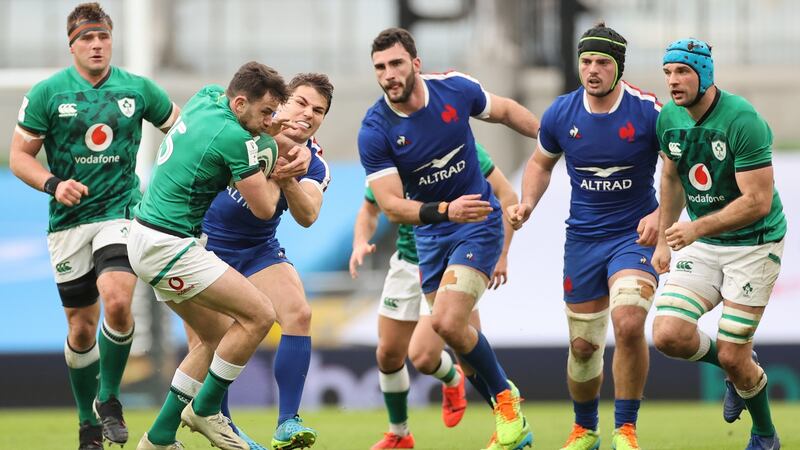How organisations transform a weakness into a strength is an alchemy that has fascinated emperors, queens, Generals, entrepreneurs and Machiavellian politicians for millennia.
Rugby coaches are a bit late to the party, but it’s always been part of the gig. It is a process that requires original thinking. Creating tactics that change what others would classify as an inferior quality into a game changer takes deep thought.
From the Battle of Thermopylae in ancient Greece, where the Spartan king Leonidas and his 300 warriors held off the hordes of King Xerxes’ Persian army, to Hannibal forging a path across the Alps with his attack elephants to ambush Rome’s back gate, to Muhammad Ali laying back on the ropes in 1974 under the night sky in Zaire, winning back the world title from George Foreman, many famous victories have been born from positions of adversity.
In the Rumble in the Jungle, Ali invented ‘rope-a-dope’ as he covered up and laid back deep on the ropes and forced Foreman to exhausted himself, flaying Ali’s body with hundreds of punches. Ali poured petrol on Foreman’s fire by continually whispering “Is that all you got, George?” into his ear.
How the less powerful have defeated the seemingly invincible has been part of human history from the day our ancient ancestors found a way to band together and defend themselves from predatory lions on the African savannah.

Esteemed military academies around the globe teach their future leaders to look back into history and study the thoughts, tactics and actions of those long dead great minds to learn what they should do and not to do in the future.
So let’s task ourselves with solving the problem of how Ireland, with a relatively small playing population, do battle and defeat the numerical giants of the world like England and France?
The starting point would be to look back into rugby history for both information and inspiration.
In 1991 when Australia lifted the William Webb Ellis Trophy, they had a mere two provincial teams below the Wallabies. In the years leading up to the 1991 World Cup the Wallaby coach was Bob Dwyer from New South Wales and his assistant was Bob Templeton, a Queenslander. Dwyer coached the Randwick club in Sydney and Templeton coached the Brothers club in Brisbane and Queensland, who in those days played far more games than NSW.
The coaches simply brought the vast majority of Wallabies in their respective states to play with their teams. Dwyer and Templeton coached the teams with the same methodology all season.
Systems and understanding
When they came together as a national team their systems and understanding were far in advance of their numerically superior opponents. New Zealand, England and France may have had tens of thousands more players than Australia, but the 15 players those countries selected were not as aligned and organised as the Wallabies.
It remains one of rugby’s greatest logistical and tactical masterclasses.
Interestingly, David Nucifora was part of that Australian team because Ireland are now creating an environment similar to that of the 1991 Wallabies that could take on France and England.
It is no coincidence that Leinster and now Ireland are playing 'gain line theory' rugby.
If Ireland continue to select a team dominated by Leinster players and they can maintain their attacking, ball in hand philosophy that underpins Leinster from the schools to academy to the senior team, then the core of this Irish team will be playing together most weeks of the season. While Eddies Jones has said that his squad only have six more campaigns together before the 2023 World Cup, Ireland, like the 1991 Wallabies, can continue to improve and prepare at every provincial and international match.
Similar to the Wallaby model from 1991, Ireland have a small but highly talented player base. The evidence from the November series is that Andy Farrell has united his team under the philosophy of high tempo, running rugby. The game plan is skill based and profoundly organised, with an emphasis on post contact leg drive, offloading and support play.
It is no coincidence that Leinster and now Ireland are playing ‘gain line theory’ rugby. That is, they are running at pace at the opposition defence and attacking the gain line. This places pressure on the attackers’ considerable skills, by passing and changing the angle of their running lines as close to the defenders as possible. In turn, gain line theory places the defenders’ skills and decision making under immense pressure. The closer the attack plays to the gain line, the more pressure it mounts on the defence.
As long time readers of this column will know, gain line theory was conceived by the 1927 Waratah team and it has underpinned not only the 1991 Wallaby attack but every other successful Wallaby team across history has implemented it.

Incredibly, almost a century on from its conception, it remains the most potent weapon that Johnny Sexton and his generals implement with huge success. Last weekend in Leinster's match against Bath, the tries of Josh van der Flier and Jordan Larmour were classic examples of the gain line theory given life by Leinster.
Something special
Having been burnt before - and I am reluctant to hope too soon for Irish success on the world stage - I do feel that Ireland maybe on the verge of something very special. But before I fully commit to that nonsense, recent history proves that when you believe Ireland can deliver, that is when they become unstuck.
In 2019 England stopped Irelands ‘A’ game plan, which up until that day had been very successful. We all watched with horror as we discovered that Ireland had no Plan B. Disaster followed.
Teams that have stopped both Leinster and Ireland have rushed forward in defence and tackled their big ball carriers behind the gain line. Oppositions have then used tactics, sometimes highly illegally, that then slow down the speed of the ruck. The opponents’ mantra is to slow the tempo of the game and deny them crossing the gain line.
As the Irish team prepares in Portugal for the Six Nations, I hope they are 'war gaming' how to counter those exact tactics. The errors from 2019 must be addressed and Ireland must have a Plan B in their back pocket.
Hopefully, unlike 2019, Ireland will have strategised and have a Plan B if their excellent Plan A is stopped
War gaming creates ‘what if?’ scenarios. This forces the players and coaches to find solutions to the on field problems created by opposition tactics. It is based on the Mike Tyson theory that “everyone has a plan until they get punched in the mouth”.
For Ireland to defeat England they must start with the ‘what ifs?’ that we know will happen. What if England get off their line in defence and catch Ireland continually behind the gain line, as they have attempted in every match since 2019?
In their planning to overcome France, Ireland must ask what if the French defensive coach Shaun Edwards empowers Antoine Dupont to be a free agent in their defensive system, as he has done in the past, and instructs his brilliant scrumhalf to simply fly out of the defensive line and terrorise Sexton at first receiver?

Ireland must not get too far ahead of themselves and give Wales the respect they have earned by asking, what if Wales illegally chop tackle our ball carriers (as they have done unabated and largely unpenalised for years) and then attack the ball at the breakdown, slowing down Irish phase possession?
Ireland have to war game answers to these and many more questions because as sure as night follows day, these problems are coming Ireland’s way.
Hopefully, unlike 2019, Ireland will have strategised and have a Plan B if their excellent Plan A is stopped.
A week out from the start of the Six Nations and Ireland seem to be in an enviable place. They have their Celtic cousins and Italy lined up at the Aviva and no-one is giving them much of a chance to succeed in London or Paris.
A situation that King Leonidas, Hannibal and Muhammad Ali may have strategised on and then concluded that this championship is laden with buckets of wonderful opportunity for this Irish team.











